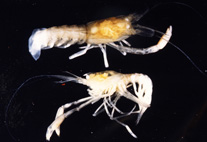Abstract
Millipedes (Diplopoda), with a few notable exceptions, are poor dispersers, showing a very high degree of endemicity, not the least in mountains. The first samplings of the Mesovoid Shallow Substratum (MSS) of the higher altitudes of the Sierra Nevada Mountains (Baetic System, Southern Spain) have led to the discovery of a high number of millipedes, each of the species present showing a different degree of establishment in this subterranean environment. An update of the knowledge on the millipedes of this region, the first data of the millipede communities in the MSS and the description of Ceratosphys cryodeserti Gilgado, Mauriès & Enghoff n. sp. are here provided, as well as the first data on the humidity and temperature fluctuations in the MSS of this high mountain. The new species is similar to other Baetico-Riffan species, while the only previously known congener from the region, C. soutadei Mauriès, 1969, has more similarities to certain Pyrenean species. Biogeographical relationships of all the captured species are also discussed.

